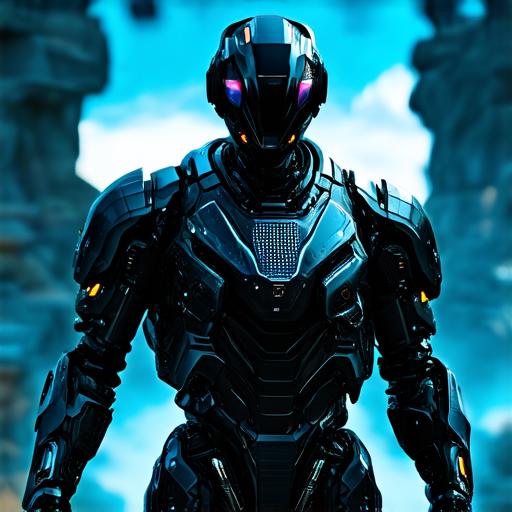Introduction
The concept of the metaverse has been around for decades, but it was only during the COVID-19 pandemic that the term became mainstream. The metaverse is a virtual world where people can interact with each other and with their environment in real-time, using avatars or digital identities to represent themselves. In this article, we will explore the mechanics of the metaverse and how it works.
The Metaverse: A Virtual World
The metaverse is a virtual world that exists parallel to our physical world. It is a digital space where people can interact with each other and with their environment in real-time. The metaverse is made up of different layers, including the social layer, the economic layer, and the entertainment layer. Each layer has its own set of rules and regulations, but they all work together to create a seamless and immersive experience for users.
The Social Layer: Connecting with Others
The social layer of the metaverse is where people can interact with each other and form relationships. This layer is made up of virtual communities, social networks, and chat rooms. These virtual spaces allow people to connect with others who share their interests and passions. They can exchange ideas, collaborate on projects, or simply hang out and have fun together.
The Economic Layer: Making Money in the Metaverse
The economic layer of the metaverse is where businesses and individuals can make money by buying and selling virtual goods and services. This layer is made up of virtual marketplaces, online stores, and service providers. In these virtual spaces, people can buy and sell virtual real estate, clothing, accessories, and even virtual art. Some people also make a living in the metaverse by providing services such as virtual therapy, virtual events planning, and more.
The Entertainment Layer: Exploring the World of Virtual Reality
The entertainment layer of the metaverse is where users can explore virtual worlds and experience immersive entertainment. This layer is made up of virtual games, simulations, and interactive experiences. In these virtual spaces, people can ride roller coasters, go on adventures, or simply relax and enjoy a virtual vacation. The entertainment layer of the metaverse has grown rapidly in recent years, with new and innovative experiences being developed all the time.
How the Metaverse Works: The Technology Behind It
The metaverse is made possible by advanced technology, including artificial intelligence (AI), blockchain, and virtual reality (VR). These technologies work together to create a seamless and immersive experience for users. Here’s how it works:
- Virtual Avatars: Users create a digital avatar to represent themselves in the metaverse. This avatar can be customized to look like anything from a cartoon character to a realistic representation of the user’s physical appearance.
- Digital Environments: The metaverse is made up of virtual environments that users can explore and interact with. These environments are created using 3D modeling software and are often based on real-world locations or fictional worlds.
- Virtual Goods and Services: Users can buy and sell virtual goods and services, such as virtual real estate, clothing, accessories, and more. These virtual items are stored on a blockchain network, which ensures that they are unique and cannot be copied or duplicated.
- Artificial Intelligence: AI algorithms are used to create realistic interactions and experiences in the metaverse. For example, AI-powered chatbots can help users find information, answer questions, and even provide emotional support.
- Virtual Reality: VR technology is used to create immersive experiences in the metaverse. Users can don a VR headset and be transported into a virtual world where they can interact with their environment and other people in real-time.
Real-Life Examples of the Metaverse in Action
- Decentraland: Decentraland is a virtual world that allows users to create, explore, and monetize their own experiences. Users can buy and sell virtual land, build structures, and even create their own games and experiences. Decentraland is built on the Ethereum blockchain and is governed by a decentralized autonomous organization (DAO).
- Snoopverse: The Snoopverse is a virtual world created by rapper Snoop Dogg in collaboration with NFTs, a digital asset platform. Users can buy and sell NFTs, which represent unique digital assets such as artwork and collectibles. The Snoopverse is built on the Ethereum blockchain and is governed by smart contracts.
- VRChat: VRChat is a virtual reality social platform that allows users to create and interact with their own avatars in a virtual world. Users can join rooms, play games, and even host events such as concerts and parties. VRChat is built on the Unity game engine and is governed by a decentralized autonomous organization (DAO).
The Future of the Metaverse: Opportunities and Challenges
The metaverse has come a long way since its inception, but there are still many opportunities and challenges that lie ahead. Here are some of the key areas to watch:

- Privacy and Security: As more people enter the metaverse, concerns about privacy and security will become increasingly important. It will be crucial for developers and platform providers to implement strong security measures to protect user data and prevent cyber attacks.
- Accessibility and Inclusion: The metaverse has the potential to be a truly inclusive space where people from all walks of life can come together and interact. However, there is still work to be done to ensure that the metaverse is accessible to everyone, regardless of their background or abilities.
- Regulation and Governance: As the metaverse continues to grow
